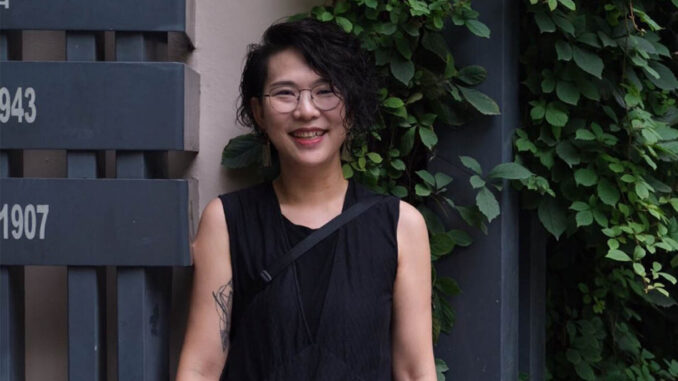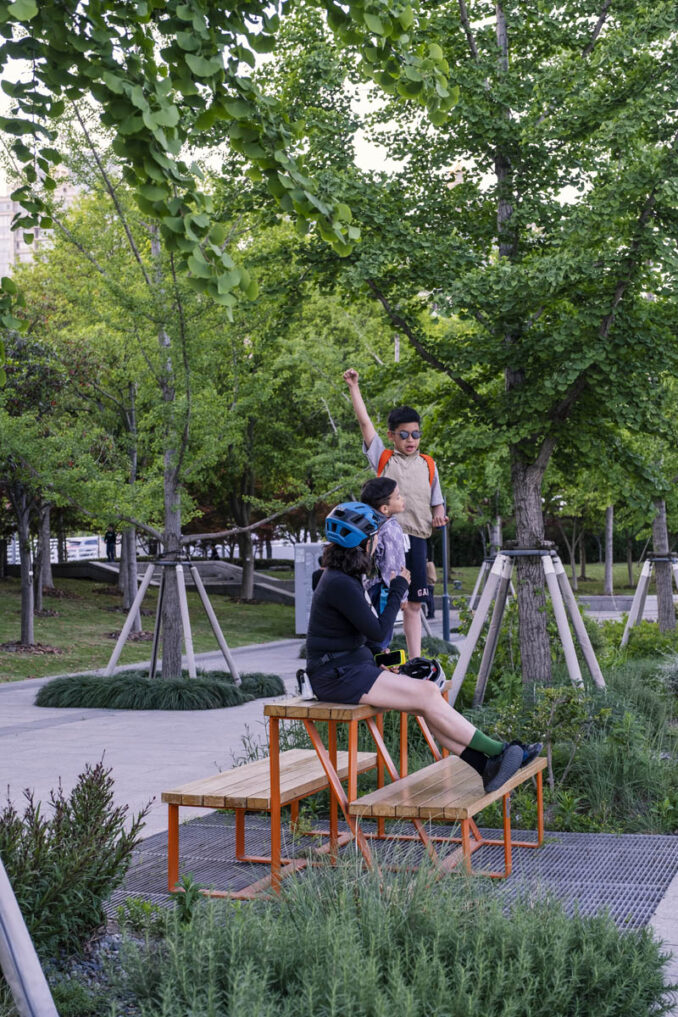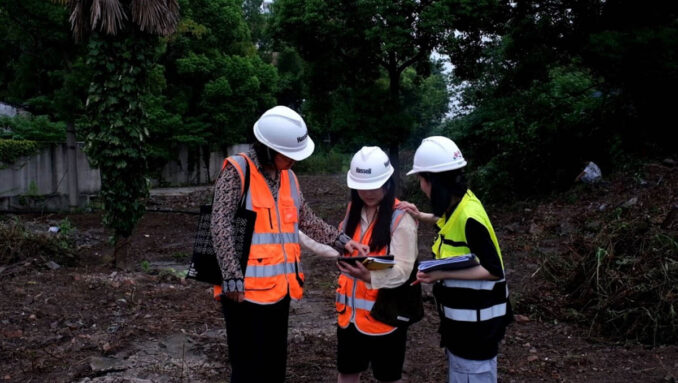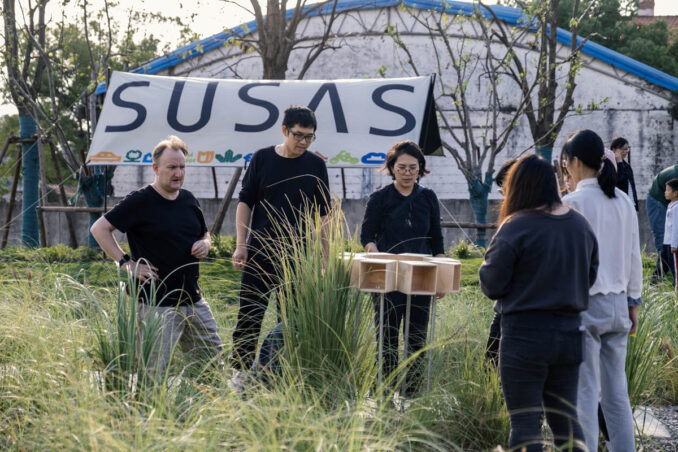As part of World Landscape Architecture Month, we are celebrating landscape architecture and profiling landscape architects from around the world. We recently had the opportunity to hear from Michelle Zhu, a Principal at Hassell in China.

Michelle is a Shanghai-based landscape architect who has over 15 years of landscape architecture experiences on many significant public realm and city-shaping projects across China. She brings deep market insights and combines Eastern and Western culture on a wide range of projects, from gardens and private courtyards to large-scale urban public spaces, waterfronts, parks and urban scale developments.
Michelle is passionate about sustainability and fostering human connections. She creates spaces that open up communities to their environment, allowing people to engage and interact with it in inspiring ways. Taking a holistic approach, she focuses on the needs and wellbeing of people and creates healthy and captivating spaces where they can gather, connect, and play.

Some of the stand-out projects Michelle has played a key role in include the West Bund Waterfront Public Realm in Shanghai, which revitalises a key urban waterfront area along the Huangpu River, and the Shanghai Yongyuan Road Redevelopment — a multidisciplinary urban renewal project integrating architecture, interior and landscape design elements.
WLA: Why did you become a landscape architect?
First of all, I think it was I who chose to be a designer. I have always been curious about exploring various subjects regardless of boundaries between them, and that makes me think all the time. A cross-disciplinary mindset connects obvious unrelated yet connected elements that bring me joy and wonder in the discovery of treasures. However, in this process, it was landscape architecture that chose me. As a landscape architect, it is not about designing a single product for people to use, resonate with, and enjoy it. It is closely related to many more areas like sociology, economics, humanities, history, botany, biology, and environmental studies. It brings me a holistic view of knowledge and leads me to discover more. It also enables me to see the complexity of society, the relationships between people, and between people and places. I find that’s the reason that keeps my passion for landscape architecture at heart – to influence and create more positive social values.

WLA: How do you start the design process?
Understanding the site as the first step means having an authentically comprehensive understanding of the site, including water, vegetation, existing soil conditions, climate, drainage, as well as cultural background and demographic data of the community we will be working with to help them protect and preserve their culture. Then comes the engagement – talk to the clients and daily users to understand their aspirations and the reasons behind them. Their perspectives could be one-sided and I’m well aware of it based on the years of experience but that’s when designers come in and connect the dots. Only by understanding and feeling what people feel can we build a shared vision for all. ‘Originally beautiful’ is built on consensus.


What is your approach to landscape design?
Again, understanding the site is crucial for better design outcomes to make sure the value is tapped into. Team work is also a key thing. I will work with people have different skillsets for comprehensive research, identifying the opportunities and challenges of the project. Then I will ask questions: How to integrate research on user experience? Site regeneration in which way? How to achieve a holistic lifecycle? These answers would disclose the design strategies. Within my practice, we have the luxury to do design reviews with different disciplines and studios that ensure consistent and best design outcomes which I feel is indispensable in our design process. With over seven design reviews throughout the process, the project’s design concepts are firmed, emphasised, and continuously optimised. Also, being personally involved in site visits, implementation, and supervision to see how things change is essential. Landscape design is dynamic, full of vitality, and constantly evolving, requiring hands-on involvement and attention to detail at every stage.
WLA: What is a key issue facing the landscape architecture profession?
The changing climate presents one of the biggest challenges, but I believe landscape architecture is better placed to make an impact. We have started our journey to build regenerative, cyclic, and lifecycle places in harmony with the natural environment globally—ultimately creating better experiences and places all people love.
WLA: Thank you to Michelle for taking the time to answer World Landscape Architecture’s questions.
